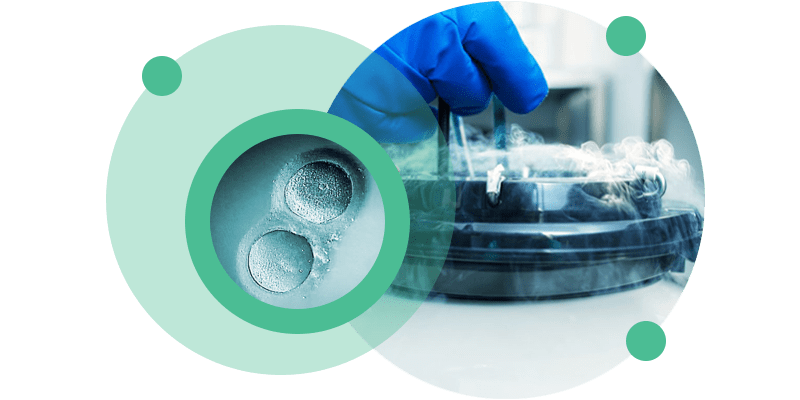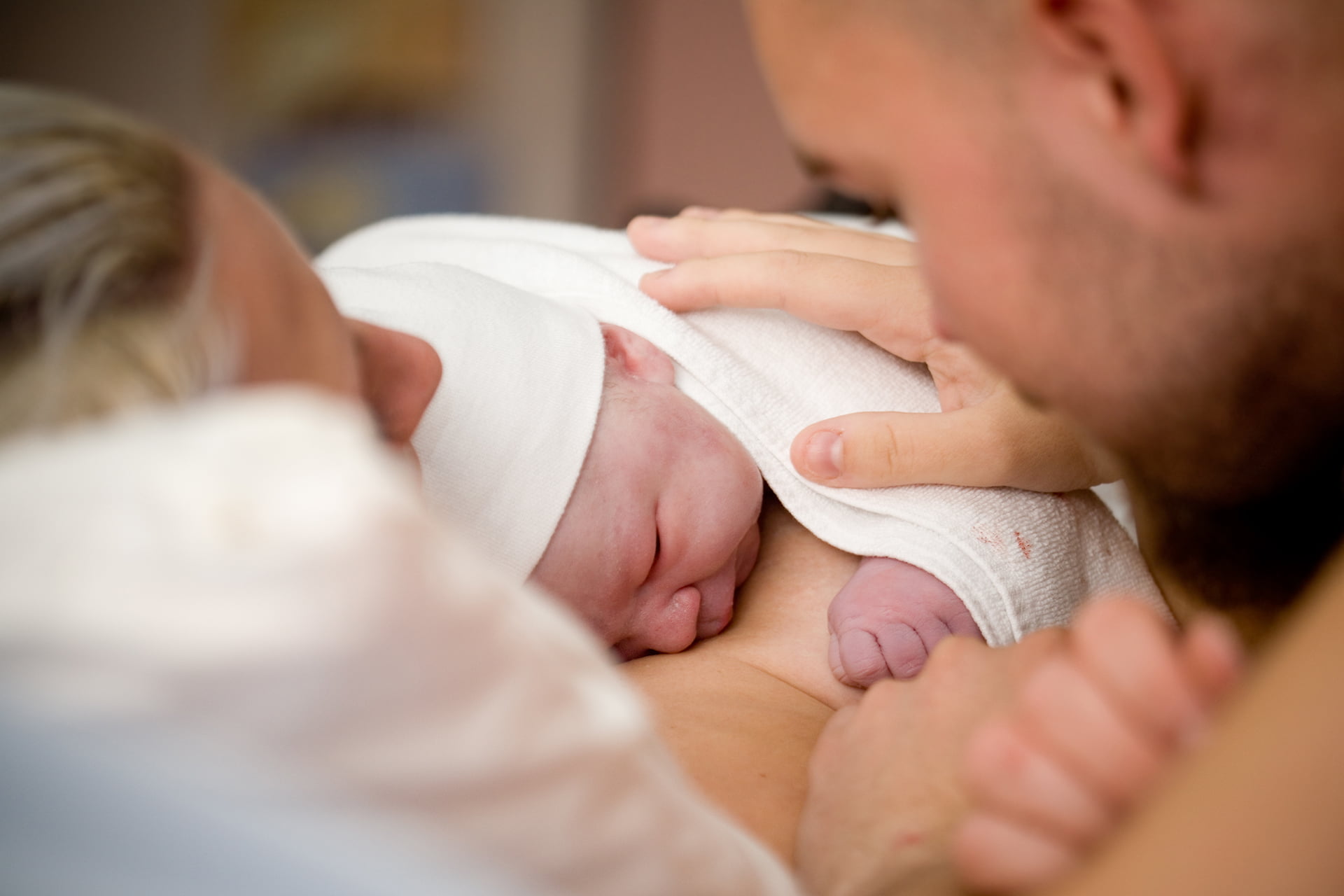Oocyte Cryopreservation
Oocyte cryopreservation makes it possible to preserve the fertility of women who wish to defer childbirth, thanks to a rapid freezing technique – oocyte vitrification.
After ovarian stimulation and follicular puncture, the oocytes collected are processed in the laboratory and cryopreserved for future use.
This procedure is indicated for women with or without oncological diseases for whom pregnancy is not currently recommended and whose fertility may be compromised in the future.
Oocyte cryopreservation is also an option for healthy women who wish to postpone childbirth for any reason.

About Oocyte Cryopreservation
Oocyte cryopreservation is indicated in the case of women with oncological diseases or others who require treatments likely to affect their future fertility, such as chemotherapy. In the case of women with cancer, it is important to assess the time available until the start of chemotherapy treatment and to obtain the assessment and agreement of the oncologist.
This technique is also recommended for women in good health who, for personal and/or professional reasons, wish to postpone their plans for motherhood until a later age, thus offering the possibility of preserving their reproductive potential.
The oocyte cryopreservation process involves a number of stages, from the medical consultation and definition of the protocol to be used, through to stimulation of the ovaries with subsequent follicular puncture and laboratory processing of the oocytes collected, culminating in their cryopreservation.
Medical appointment
The patient is assessed by means of examinations and hormone analyses and the ovarian stimulation protocol to be followed is defined.
Ovarian stimulation
On the 2nd or 3rd day of the menstrual cycle, a hormone treatment is started, which causes several follicles to recruit and grow at the same time. Regular ultrasound checks are carried out to verify the number and size of the growing follicles. Once the optimum follicular size has been reached, the medication is programmed to trigger the final maturation of the oocytes contained in the follicles. After 36 hours of administration of this medication, a follicular puncture is performed.
Follicular puncture
A rapid surgical procedure, carried out vaginally under sedation, during which the liquid is aspirated from each follicle.
Oocyte selection
The follicular fluid obtained is observed in the laboratory and the oocytes are collected. These are assessed according to their degree of maturity and only mature oocytes are selected for cryopreservation.
Glazing
The selected oocytes are cryopreserved in devices called flakes, using the vitrification technique. The reeds are stored in liquid nitrogen containers, where they remain until they are used.
In the past, oocyte cryopreservation was carried out using slow freezing techniques which, due to the cellular specificity of oocytes, offered very few guarantees and oocyte survival rates were below expectations. The development of the vitrification technique, an ultra-rapid freezing method, has enabled great progress to be made in the cryopreservation of female gametes.
Vitrification makes it possible to replace the water, which is present in large quantities in the oocyte, with cryoprotective solutions. This replacement protects the egg membranes and prevents the formation of ice crystals inside, which would lead to cell death. The oocyte is thus prepared to withstand the low temperatures to which it will be subjected, since the next stage will involve rapidly cooling the oocytes to temperatures of -80°C and storing them in containers of liquid nitrogen (-196°C).
The survival rate of oocytes after vitrification is over 90%. However, there are factors that will influence the use of these cryopreserved oocytes, in particular the quality of the oocytes.
In other words, cryopreserved oocytes have a high probability of survival, but if their quality is impaired, their use, i.e. fertilisation and subsequent embryonic development, may be compromised.
It is therefore important to note that the success rate of oocyte cryopreservation is high, but that the final objective – pregnancy – will depend on many other conditions.
The quality of the oocytes is affected by a number of factors, the most important of which is the patient’s age. It can be said that the later oocyte cryopreservation is carried out, the lower the quantity and quality of the oocytes recovered.
It should also be borne in mind that oocyte cryopreservation is never a guarantee of future pregnancy. Postponing childbirth should therefore be discussed with the doctor to understand the risks involved.
When it is time to use the cryopreserved oocytes, they will be thawed and fertilised by intracytoplasmic sperm microinjection (ICSI). The embryos obtained will be kept in culture for 3 to 5 days, after which the best quality embryo or embryos will be transferred to the uterus.





Common questions
A woman’s reproductive potential begins to decline after the age of 35 and falls sharply after the age of 40. This means that the quantity and quality of oocytes decline, which could compromise the success of the cryopreservation technique and subsequent oocyte fertilisation. The timing of oocyte cryopreservation should therefore be discussed with your doctor on a case-by-case basis, bearing in mind that the later the procedure, the lower the chances of success.
Under current Portuguese law, oocytes can remain cryopreserved for a period of 5 years, after which the patient must sign a new consent form to maintain cryopreservation for a further 5 years.
No medically assisted reproduction technique can guarantee pregnancy. Oocyte cryopreservation functions only as a reserve of female gametes for future use, and the success of the technique cannot be guaranteed.
Follicular puncture is a surgical procedure, although not very invasive, but it does require sedation, so it is advisable to rest on the day of the operation and avoid any physical exertion in the days that follow.
Once the laboratory procedure has been completed, you will be informed of the number of cryopreserved oocytes and a medical consultation will be scheduled to discuss the need to repeat the procedure to increase the reserve of cryopreserved oocytes.
You can consult the CETI price list here.
